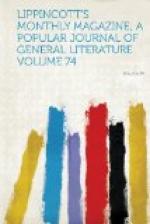Great as is the service done in particular cases, the most valuable part of The Still Lion is the moral which it points, that “successful emendation is the fruit of severe study and research on the one hand, and of rare sensibility and sense on the other.” And in our opinion Dr. Ingleby might have gone even farther, and demanded for it a spark of that creative power which is genius. But it must not be inferred that all the difficult passages in Shakespeare can be thus explained away. Despite all learning, or acuteness, or genius, there remains a considerable number that have never yet been solved, and never will be, in general acceptation, till the crack of doom. These, however, bear so small a proportion to the vast mass of perplexing riddles that have been satisfactorily settled that, like an infinitely small quantity in mathematics, they may be neglected. Therefore, let not him who wishes to read his Shakespeare unalloyed by notes and textual comment, despise the painful critic or accuse him of playing at loggats with the words of Shakespeare. It is through the labors of critics that the text is in such a shape that the work-a-day reader can read it at all. In the Folios and Quartos we see Shakespeare as through a glass darkly, but, thanks to those drudges, the commentators, in numberless places we can now see him face to face.
The Orphan of Pimlico, and other Sketches, Fragments and Drawings. By William Makepeace Thackeray. With some notes by Anne Isabella Thackeray. Philadelphia: J.B. Lippincott & Co.
The artistic sense—the vivid conception of things and persons in their external aspects and with a constant regard to their groupings and the effect upon the spectator—made itself peculiarly prominent in all that Thackeray wrote. It is not that he gives us elaborate descriptions: this, indeed, is the resource of writers who are lacking in the faculty mentioned, and are consequently obliged to reach the result, if at all, by inferior means. His power lay in the selection of traits which were strictly characteristic, in making every act or phrase indicative of individuality. An astute critic, therefore—one gifted with that keenness of vision to which the exercise of the office unhappily implies a claim—should have been able to infer Thackeray’s dexterity with the pencil




